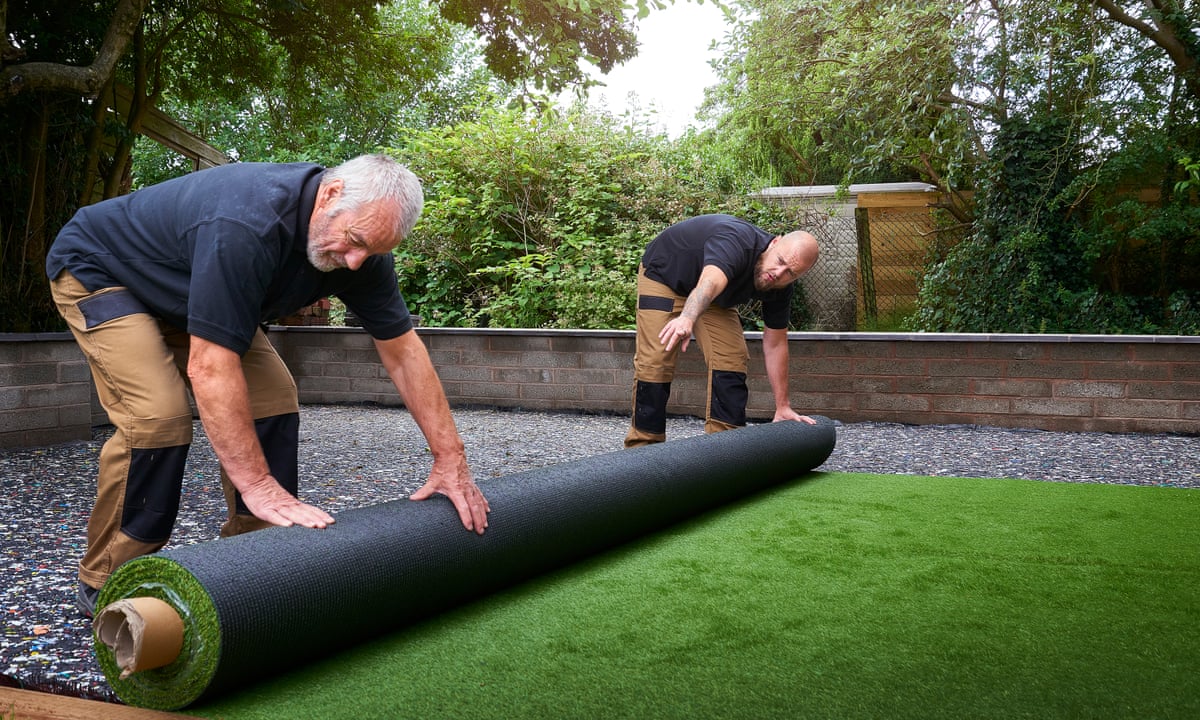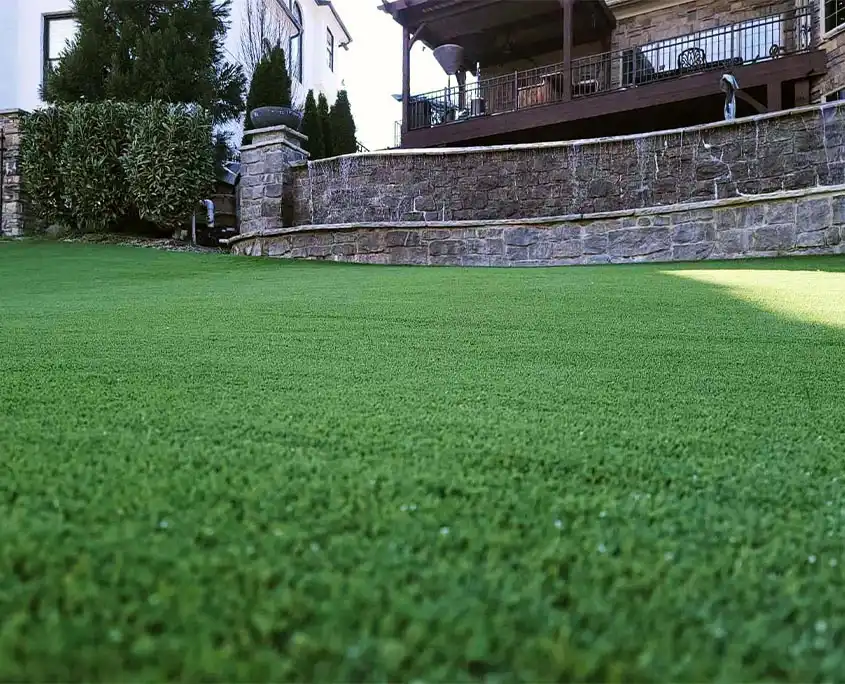Choose the Leading Turf Installation Phoenix AZ Solutions for Your Home or Business
Choose the Leading Turf Installation Phoenix AZ Solutions for Your Home or Business
Blog Article
Explore the Environmental Conveniences of Opting for Artificial Lawn Solutions
The fostering of synthetic grass remedies provides an engaging possibility to resolve pressing environmental difficulties. By significantly reducing water use and decreasing the application of damaging chemicals, these choices not just promote lasting landscape design however also shield neighborhood ecological communities. Additionally, the reduced carbon impact connected with lowered maintenance tasks adds to a much more lasting strategy to land monitoring. The effects of these advantages prolong past simple conservation initiatives, increasing questions concerning their long-term effect on habitat preservation and general ecological balance. Exploring these dimensions discloses a complex interplay worth taking into consideration.
Water Preservation Conveniences
One of the most substantial benefits of synthetic turf is its ability to preserve water. In comparison, man-made grass does not need watering, substantially minimizing the general demand for water sources.
By eliminating the demand for regular watering, fabricated grass adds to sustainable landscape practices and helps minimize the environmental effect of too much water consumption. The preservation of water extends to the reduction of overflow, which can lead to dirt disintegration and waterway contamination.
Additionally, the installment of synthetic lawn permits towns and home owners to assign water resources a lot more effectively, concentrating on crucial usages such as alcohol consumption water and farming. The change in the direction of synthetic grass not just advertises accountable water usage but also aligns with broader environmental goals focused on preserving natural deposits.
As neighborhoods progressively focus on sustainability, the water conservation advantages of synthetic grass present a compelling situation for its fostering in property and industrial landscape design jobs.
Minimized Chemical Usage
The transition to fabricated lawn dramatically reduces the reliance on chemical therapies typically used in all-natural lawn maintenance. Traditional lawn administration normally includes the application of plant foods, pesticides, and herbicides to promote development and control insects. These chemicals can pose dangers to human health, neighborhood wildlife, and the setting, adding to dirt and water contamination.
On the other hand, synthetic grass eliminates the demand for these dangerous substances. Once mounted, it needs marginal upkeep, largely consisting of routine cleansing and irregular infill replenishment. This decrease in chemical usage not just benefits the instant environment yet likewise adds to more comprehensive ecological stability. By lessening the launch of artificial compounds right into the community, synthetic grass advertises much healthier soil and water supply.
Moreover, the absence of chemical overflow related to man-made grass installments aids protect local waterways from pollution, supporting water life and maintaining biodiversity. Turf installation phoenix az. As communities significantly focus on sustainable techniques, selecting synthetic grass provides a viable service that lines up with environmental preservation goals. Through this shift, property owners can delight in lush eco-friendly spaces without endangering ecological health and wellness, leading the means for an extra sustainable future
Lower Carbon Impact

Additionally, the installation of synthetic grass can cause substantial water conservation. All-natural lawns need substantial quantities of water for irrigation, which not just includes to the carbon footprint connected with water removal and therapy but likewise pressures local water resources. On the other hand, fabricated turf requires marginal maintenance, needing no watering, consequently significantly decreasing water use and its connected power expenses.
In addition, the longevity of synthetic additional info grass adds to its decreased carbon influence. With a life-span of approximately 15 years or even more, the demand for frequent replacements is decreased, causing much less waste and reduced power consumption in manufacturing and taking care of traditional turf options. Generally, fabricated lawn presents a lasting alternative for eco aware landscape design.
Habitat Preservation
Habitat conservation is a critical consideration in the argument over landscaping options, especially when contrasting synthetic grass to natural grass. All-natural lawn lawns typically require extensive upkeep, consisting of the use of herbicides, chemicals, and fertilizers, which can detrimentally affect local communities. These chemicals can seep into the soil and rivers, harming indigenous plants and animals and interrupting regional environments.
On the other hand, synthetic grass provides an opportunity to reduce the eco-friendly impact of landscaping. By choosing artificial lawn, property owners can decrease the interruption of all-natural habitats related to traditional yard treatment methods. Synthetic grass removes the requirement for hazardous chemicals, thereby securing nearby wild animals and keeping the integrity of bordering ecosystems. In addition, the installation of fabricated grass can bring about the conversion of former yard areas into even more biodiverse landscapes, such as pollinator yards or indigenous plant areas, which can support neighborhood wild animals.
Ultimately, the transition to synthetic turf not just preserves water and lowers upkeep initiatives however also promotes a much more harmonious connection between human activities and the natural environment, promoting environment conservation in the procedure.
Long-Term Sustainability
Long-lasting sustainability is a vital variable in examining the advantages of synthetic turf over traditional yard lawns. Among one of the most considerable benefits of fabricated grass is its sturdiness; it can last up to 15-20 years with marginal maintenance, whereas natural lawn requires constant reseeding and replacement. This longevity minimizes the need for consistent resources, such as water, plant foods, and pesticides, which are crucial for preserving a healthy and balanced turf lawn.
In addition, man-made grass adds to a reduction in carbon emissions connected with grass care equipment. Typical yards frequently need gas-powered mowers, leaners, web and blowers, every one of which contribute to air contamination. Turf installation phoenix az. In comparison, artificial grass removes the need for such devices, advertising a cleaner environment
Furthermore, the manufacturing of fabricated turf progressively makes use of recycled materials, improving its sustainability account. As suppliers adopt green practices, the environmental footprint of fabricated turf continues to lessen.

Conclusion
The adoption of synthetic grass options offers substantial ecological advantages, including substantial water conservation, decreased reliance on dangerous chemicals, and a reduced carbon impact. Moreover, synthetic grass help in protecting natural habitats by reducing land disturbance and advertising lasting sustainability via using long lasting materials. Jointly, these aspects highlight the potential of artificial turf to add positively to environmental wellness and use a practical alternative to typical landscape design practices in a significantly resource-conscious globe.
In contrast, fabricated grass does not need watering, substantially lowering the total need for water resources. By reducing the release of artificial substances right into the environment, synthetic lawn promotes much healthier soil and water systems.
In addition, the setup of artificial grass can result in substantial water preservation. In contrast, man-made lawn needs very little maintenance, needing no watering, thereby dramatically decreasing water use and its associated energy prices.

Report this page